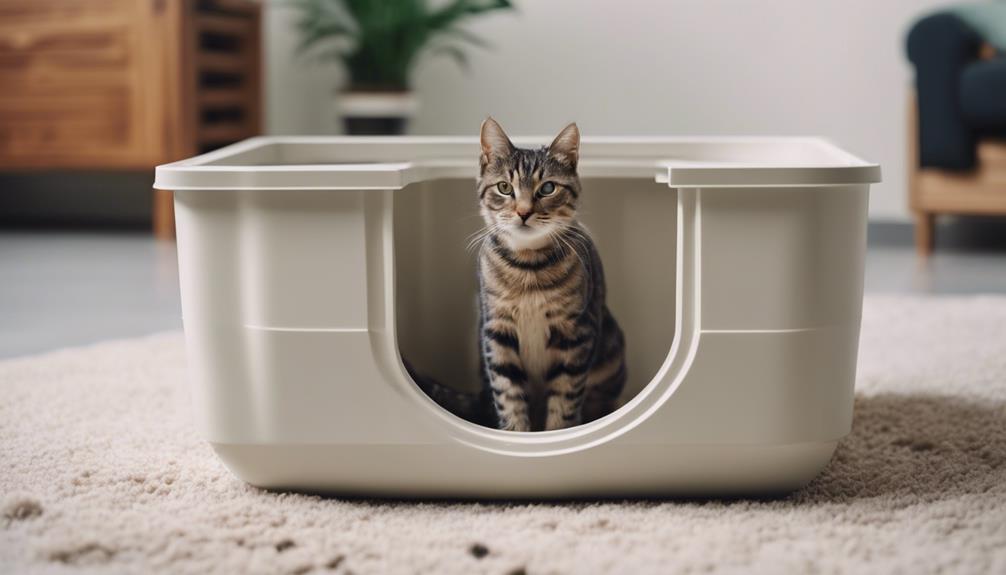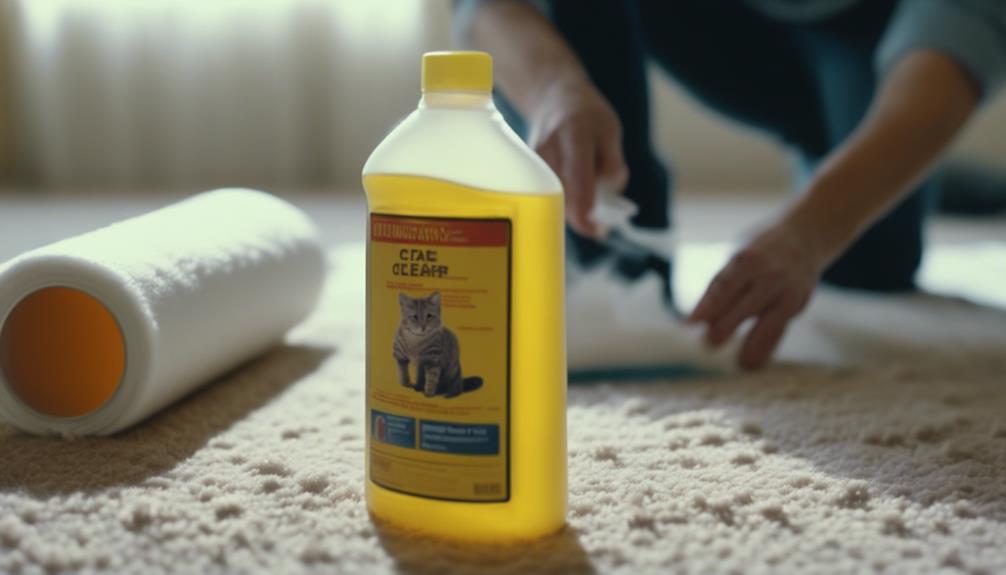Understanding the reasons behind a cat's inappropriate urination habits is crucial in addressing and rectifying this common issue. By delving into the underlying motivations behind this behavior, pet owners can effectively implement strategies to prevent their feline companions from peeing outside the litter box.
In this comprehensive guide, we will explore five practical ways to deter cats from urinating in the house, coupled with insights into the reasons behind their actions. Stay tuned to discover how behavioral, medical, and environmental factors play a pivotal role in curbing this behavior and fostering a harmonious relationship with your feline friend.
Key Takeaways
- Understand cat behavior and reasons for inappropriate peeing.
- Address medical considerations and prevention strategies.
- Create a cat-friendly litter box setup for comfort.
- Help cats feel safe and stress-free to prevent peeing issues.
Behavioral Modifications for Preventing Peeing
In addressing inappropriate peeing behavior in cats, implementing behavioral modifications is essential for preventing further incidents and promoting proper litter box usage.
Begin by ensuring a clean and comfortable litter box setup, providing multiple boxes in quiet locations. Use unscented, clumping litter and maintain cleanliness to encourage regular use.
Additionally, address any stressors in the cat's environment by providing enriching toys, hiding spots, and utilizing calming products like Feliway.
Employ desensitization and positive reinforcement techniques to help cats feel secure and adjust positively. Remember, punishing cats for inappropriate peeing is ineffective and consulting a vet is crucial to rule out medical issues.
Medical Examination for Urinary Issues
To ensure the well-being of your feline companion and address any potential urinary issues, a thorough medical examination by a veterinarian is essential. When dealing with a cat that is peeing inappropriately, it is crucial to rule out any underlying medical conditions that could be causing this behavior.
Here are some key points to consider during the medical examination:
- Urinalysis and Blood Tests: These tests can help identify issues like urinary tract infections (UTIs), diabetes, or kidney problems.
- Physical Examination: A vet can check for signs of pain, discomfort, or abnormalities in the urinary system.
- Imaging Studies: X-rays or ultrasounds may be necessary to visualize the urinary tract and identify any obstructions or abnormalities.
- Behavioral History: Providing details about your cat's behavior and environment can assist the vet in making an accurate diagnosis.
Setting Up an Ideal Litter Box

A well-designed litter box setup plays a crucial role in promoting proper bathroom habits for cats. To create an ideal environment, provide multiple, clean, and unscented litter boxes in quiet locations. Opt for large, uncovered litter boxes, as some cats may feel confined in covered ones.
Consider using calming products like Feliway to reduce stress and anxiety. Place the litter boxes away from high-traffic areas and ensure easy access for your cat. Regularly clean the boxes and use clumping litter for hygiene and comfort.
Creating a Stress-Free Environment
Establishing a serene and calming atmosphere is essential for fostering optimal wellbeing and contentment in feline companions, particularly when addressing inappropriate peeing behaviors. To create a stress-free environment for your cat, consider the following:
- Remove Stressors: Identify and eliminate factors causing stress for your cat, such as loud noises or conflicts with other pets.
- Provide Enrichment: Offer enriching toys, scratching posts, and hiding spots to promote mental stimulation and relaxation.
- Utilize Synthetic Pheromones: Consider using products like Feliway to help calm your cat and create a sense of security in their environment.
- Show Love and Understanding: Shower your cat with affection, patience, and understanding to help them feel safe and secure, especially during challenging times.
Immediate Actions for Accidents

In cases of accidents involving inappropriate peeing by cats, prompt and effective actions are crucial to address the issue and prevent further incidents.
If a cat has an accident, start by blotting the area with paper towels to absorb as much urine as possible. Avoid using ammonia-based cleaners as they can attract cats back to the same spot. Instead, opt for enzymatic cleaners designed to break down the urine compounds and eliminate odors.
Restrict the cat's access to the soiled area to prevent re-marking. Consider placing an additional litter box in the spot as cats may be indicating a preference for that location.
Monitoring the cat's behavior and consulting a vet if the issue persists is advisable.
Conclusion
In conclusion, implementing behavioral modifications, conducting medical examinations, setting up suitable litter boxes, creating stress-free environments, and taking immediate actions are essential strategies to prevent cats from peeing inappropriately.
By addressing these factors comprehensively, pet owners can cultivate a harmonious relationship with their feline companions and maintain a clean living environment.
Consistent application of these interventions will aid in curbing undesirable urination behaviors, promoting a healthier and happier coexistence with cats.




